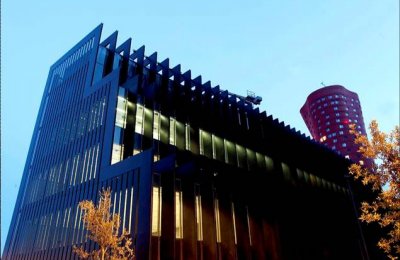LEED
LEED certification, developed by the US Green Building Council, is a comprehensive tool for planning, evaluation and independent auditing of the environmental and energy rating of buildings, based on qualitative assessment in which “ecopoints” are awarded for objective, measurable values.
LEED is a global benchmark for environmental quality and a tool for identifying and evaluating outstanding developments. In 2016, there were more than 50,000 LEED-certified buildings and 45,000 in process in 140 countries.
LEED: differentiating factors
LEED certification guarantees the overall efficiency of a building, as well as the capacity to demonstrate and communicate this quality. Environmental and energy certification in a building has the following advantages:
- Minimising environmental impact: LEED quantifies the degree of environmental quality and proposes specific strategies to reduce impact.
- Differentiation and international visibility: LEED certification is associated with innovation, quality and excellence.
- Economic and energy savings in water and power consumption (30-60% reduction) and lower maintenance costs. Most investment in new solutions and efficient technologies have short pay-back periods.
- Investment profitability: property value can increase by up to 20%. More and more buyers and tenants are interested in a building with LEED certification.
- Greater comfort and better health: 10% average increase in productivity in office blocks where care is taken over the quality of internal air, and visual and acoustic comfort.
- Environmental project management: continuous, rigorous LEED management throughout the planning, construction and commission stages ensures compliance with the environmental and energy objectives established in the original project.
Services include:
- For owners/developers: study of the feasibility of LEED certification and strategy for its application. Effective management of implementation: support for architecture and engineering, energy simulations and alternatives for improvements, specifications for contractors, etc. Confirmation of compliance before the GBCI. Coordination of the certification process with the project management company.
- For project designers/architects: input of innovative environmental and energy ideas and technical support for their implementation. Energy simulations and alternatives for improvements. Energy certification. Drafting sustainability and environmental reports.
- For construction companies: monitoring the application of LEED criteria. Drafting specific plans: erosion and sedimentation control plan, indoor air quality plan, etc.
Also
- ERF helps to design very low consumption buildings and facilities (A, NZEB classifications) with low environmental impact (e.g., study of the life cycle of construction materials).
- We also have experience with other certification systems, such as BREEAM and VERDE.


